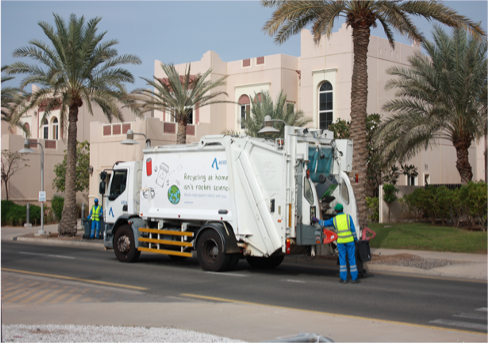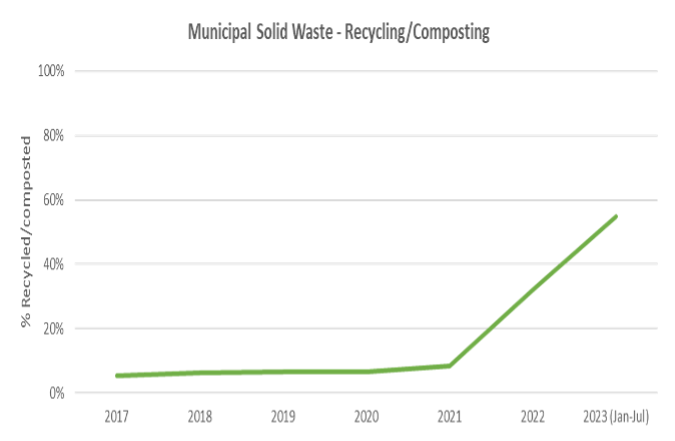
Facilities Management (FM) is proud to announce that so far this year more than 50% of waste in KAUST has been diverted from the landfill, marking the highest overall waste recycling rate ever achieved at KAUST.
This could not have been achieved without the community’s unwavering support for the recycling program and the efforts of our partners, Edama Organic Solutions and Averda.
In comparison, only 33% of the total municipal waste generated in 2022 was recycled. FM expects the municipal waste recycling rate to increase even further as we forge ahead to zero net waste.
The continued increase will be achieved through:
- Enhancements to our recycling program and sustained awareness campaigns.
- Improved waste segregation both at home and in the workplace.
- An increase in community participation in the composting and recycling program.

Join the KAUST Composting Program
Households interested in joining the composting program can register here. More information about the program is available on the registration page
The segregated food waste from participating households is collected separately and sent to Edama Organic Solution’s composting facility in KAUST.
Households should ensure that any plastic, packaging, containers and other non-organic materials are removed from the segregated food waste to avoid contamination.
Reminders for residential recycling and waste collection
- The Mixed Recycling bin is collected twice a week – here is a list of what can be recycled.
- The Non-Recyclables bin is collected three times a week.
- Organic waste is collected three times a week for those participating in the composting program.
- There is daily waste collection from the central garbage rooms in Harbor and Oasis.
For further inquiries regarding recycling, please contact waste management at recycle@kaust.edu.sa
For more information about Facilities Management in KAUST, please visit the FM website.

2 comments
This is great! I would like to know how much of the 50% is actually recycled. Most countries with a long established recycling program, like US, only recycle about 5% of their plastics and 68% of their papers.. Thanks in advance for your feedback.
Also I would like to know what the recycled matter becomes. is it reinvested in local companies for packaging?
Thank you for your interest and questions! When it comes to the recycling rate, it can vary depending on the region and specific materials being recycled. While you mentioned that countries like the US recycle about 5% of plastics and 68% of papers, it’s important to note that recycling rates can differ globally.
Regarding what recycled matter becomes, it often goes through a process of reprocessing to turn it into new products. These products can vary depending on the material being recycled. For instance, recycled plastics can be transformed into new plastic products, fibers for clothing, or even used in construction materials. Recycled paper can be turned into new paper products, packaging materials, or even composted.
As for reinvestment in local companies for packaging, it can be a possibility. Many recycling programs collaborate with local businesses to ensure that recycled materials are utilized efficiently and sustainably. However, specific practices can vary depending on the region and the recycling system in place.
Please keep in mind that recycling practices and infrastructure can differ between countries and regions, so it’s always beneficial to check with local recycling authorities or organizations to get accurate and up-to-date information for your specific area